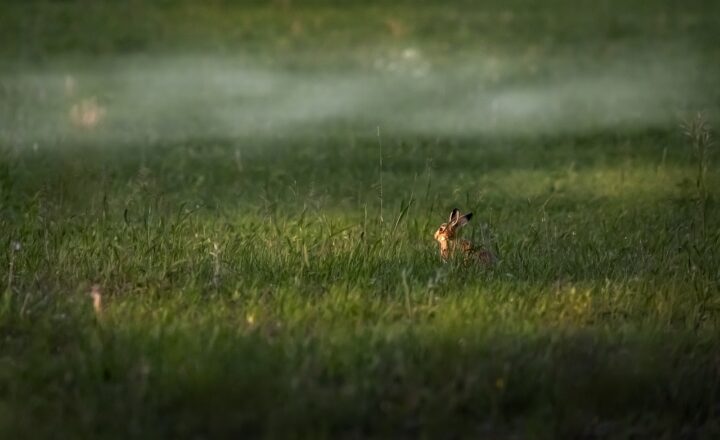How Zoos Prepare Animals for Reintroduction into Their Native Habitats
November 12, 2024

Reintroduction has become a crucial aspect of wildlife conservation as habitats become fragmented and species face the threat of extinction. Zoos play a pivotal role in this process, meticulously preparing animals for their return to the wild. This article delves into the various stages and practices that zoos employ to ensure their charges are well-equipped to adapt to their native ecosystems.
1. The Importance of Reintroduction
Reintroduction entails the release of captive animals back into their natural habitats. The main objectives are to boost dwindling populations, restore ecological balance, and enhance genetic diversity. It is an intricate process that helps mitigate the impacts of habitat loss, poaching, and environmental changes caused by human activities.
Through successful reintroduction initiatives, species such as the Arabian oryx, California condor, and grey wolf have seen significant population recoveries. In this context, zoos serve not only as sanctuaries but also as active participants in the global conservation effort.
2. Assessing the Animal’s Needs
Before reintroduction can commence, zoos conduct extensive assessments of the animal’s needs and the specific challenges they will face in the wild.
- Behavioral Assessment: Animals must develop the skills necessary for survival, including foraging, hunting, and social interaction. Behavioral assessments help caretakers understand the unique needs of each species and any behavioral modifications that need addressing before release.
- Health and Genetic Evaluation: Health screenings and genetic evaluations ensure the animals are fit for release and that genetic diversity is maintained in the wild population. This involves vaccination protocols and screening for diseases to minimize the risk of further endangering the species.
- Environmental Familiarization: Prior to release, animals often undergo an acclimatization process to become familiar with the environment where they will be reintroduced. This can involve sensory stimulation, incorporating natural elements into enclosures, and gradually decreasing human interaction.
This multi-faceted assessment process helps create a tailored reintroduction plan addressing each species’ particular needs.
3. Training Programs for Survival Skills
Zoos implement training programs aimed at equipping animals with essential survival skills relevant to their species and intended habitats.
- Hunting and Foraging Techniques: For carnivorous and omnivorous animals, specialized training helps them develop effective hunting tactics, while herbivores learn to identify and forage for suitable vegetation. This training often includes enrichment activities that mimic hunting and foraging behaviors.
- Social Dynamics: Social animals must learn to interact appropriately with their peers. After being in solitary confinement during captivity, they are gradually introduced to others of their species in controlled environments to build social structures prior to release.
By enabling animals to hone these survival skills, zoos increase their chances of success once released into the wild.
4. Monitoring During the Reintroduction Process
Once animals are released into their native habitats, ongoing monitoring becomes paramount to assessing their adaptation and survival.
- Tracking Technology: Many zoos employ GPS collars or tracking devices to monitor the movements and behaviors of reintroduced animals. This technology provides valuable data concerning their survival rates, habitat preferences, and social interactions.
- Post-Release Assessments: Regular field assessments allow for the observation of health and interaction with local populations. Such measures can help conservationists understand the challenges faced by the animals and make necessary adjustments to future reintroduction efforts.
- Community Involvement: Engaging local communities is crucial for the success of reintroduction programs. Zoos often conduct educational programs to ensure that surrounding communities value and protect the newly reintroduced species, fostering cohabitation between people and wildlife.
Monitoring efforts are essential for evaluating the efficacy of reintroduction programs and refining future strategies.
5. Success Stories: Notable Reintroduction Programs
Various successful reintroduction programs provide invaluable lessons for current and future efforts. Let’s explore some notable case studies:
- California Condor: Once on the brink of extinction with only 27 individuals remaining, the California condor was bred in captivity and successfully reintroduced into the wild. Today, there are over 500 condors living across California, Arizona, and Mexico, with ongoing monitoring and community engagement efforts ensuring their survival.
- Arabian Oryx: Extinct in the wild in the 1970s, Arabian oryx were successfully bred in captivity and have since been reintroduced into various protected areas in Oman and the UAE. These efforts have led to their populations recovering to around 1,000 individuals in the wild.
- European Beaver: Once extinct in the UK, European beavers have been reintroduced to several locations with highly successful results. These keystone species have transformed their environments, improving wetland ecosystems and enhancing biodiversity in the region.
These success stories highlight the potential of reintroduction programs when grounded in thorough training, community involvement, and long-term commitment to monitoring and support.
6. Conclusion: The Future of Zoo-Based Reintroduction Programs
The role of zoos in reintroducing animals to their native habitats is ever-evolving. With advancements in technology and a better understanding of wildlife behavior, the potential for successful reintroduction programs continues to grow. As we move forward, collaboration among conservationists, zoologists, and local communities will play a significant role in ensuring the long-term success of these initiatives.
Ultimately, well-prepared animals have a much higher chance of thriving in the wild, thus protecting our planet’s biodiversity for generations to come.








